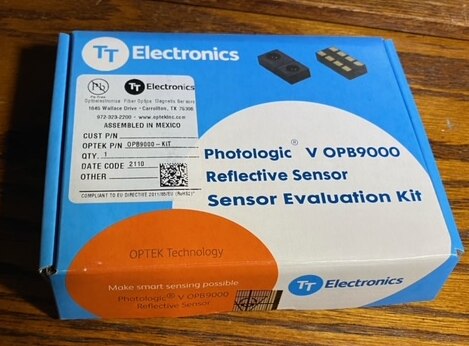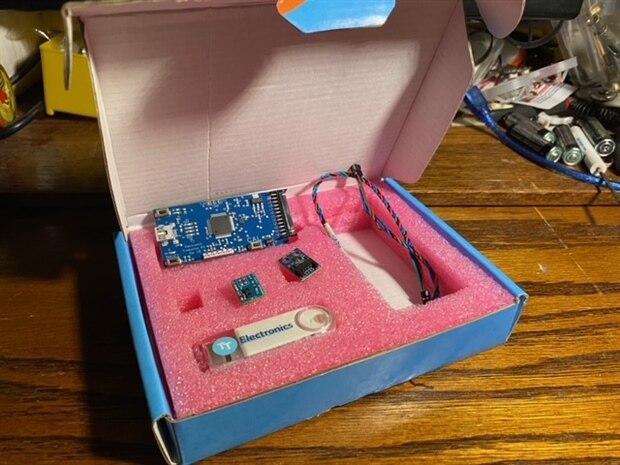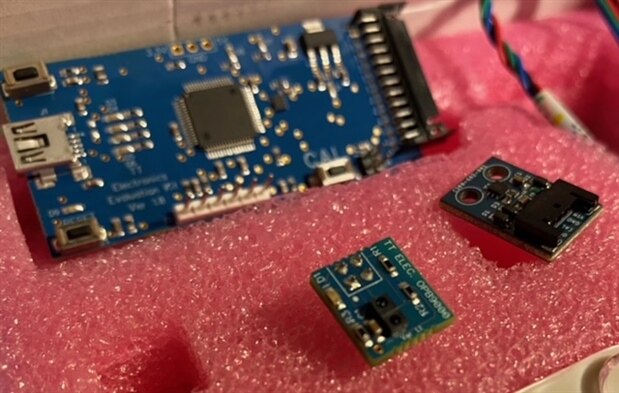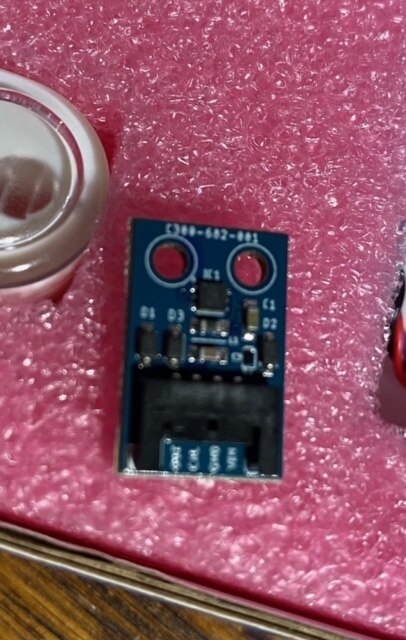In testing the TT Electronics Reflective Optical Sensor Kit, I decided to approach it from the perspective of use in a prototype or DIY setting where ease of initial setup and integration into a quickly buildt design or system is valuable. On this point the main board and a second sensor board with wiring harness and mounting holes proved best for me.
All necessary drives were included on a USB drive. Others have posted more detailed accounts of the software and prototyping support. All I will mention is that I found the software good and easy to setup on Windows 10. The only thing I would like to see change on the prototyping system is the lack of documentation and support for the microprocessor demo board. It would have been nice to know the features and functions of that board more fully, and possibly even have access to the software running on that board to allow for faster prototyping of different applications.
A second sensor module was included. This module included the capacity for a larger range of input voltages, up to 30V and, most importantly for me, includes holes for mounting screws. These screw holes make DIY and quick prototyping much faster.
A detailed look at the sensor data sheet (the actually sensor on the boards, not the board datasheet) gives some light on the optical performance. You could spend hours looking over these numbers and comparing reflectivity and scattering of materials to get an idea of reliability and repeatability of these sensors, but it easier to just test them. I used the OBP900C board attached to the included microprocessor board. The surface sample was moved slowly back and forth by hand with a micrometer head reading down to 0.05 thousandths of an inch. The distances at which the sensor tripped were then recorded. I also tested near and far calibrated positions.
Continuing on the theme of quick prototyping and DIY, I tested several surfaces including masking tape, anodized aluminum and a white notecard. With each of these the sensor preformed comparably for short detection distances, with less than one thou variation in the triggering distance and a hysteresis of 0.02 or 0.03 inch. This gave a good protection from repeated on/off jitter. However, repeatability with a white notecard at 1/2 in and 1 inch was poor.
The data sheets claim a sensing distance up to 25 mm, but I found this may only be reliable with a careful choice of material. Likely due to the high scattering off the notecard surface, I could not get a reliable trigger at the expected ON/OFF endpoints and stopping the middle resulted in flickering on and off. While the roughened surface of the white card could be challenging, It seems a reasonable target for this device and thus I cannot recommend for triggering above 1/2 inch without careful testing of the surface.
My testing conclusion is that If a repeatable position is needed, it is likely best to calibrate a short distance, say 1/8 to 1/4 inch. Longer distances only seem suitable for detecting object presence. in both cases a carefully chosen surface is best.
My typical near-range 0.3 thou to 0.9 thou variability is small compared to most application tolerances and may be limited by repeatability of manually moving the linear translation stage. I started to test this with a high-resolution motorized test, but results were not available in time for press. These may be added after they are available.




